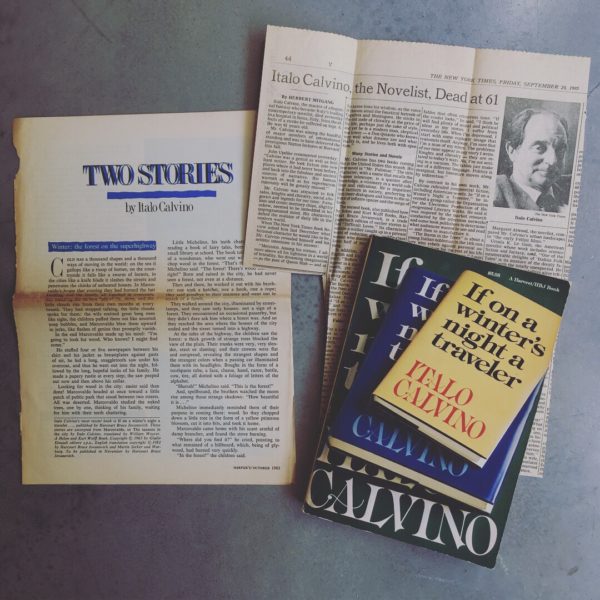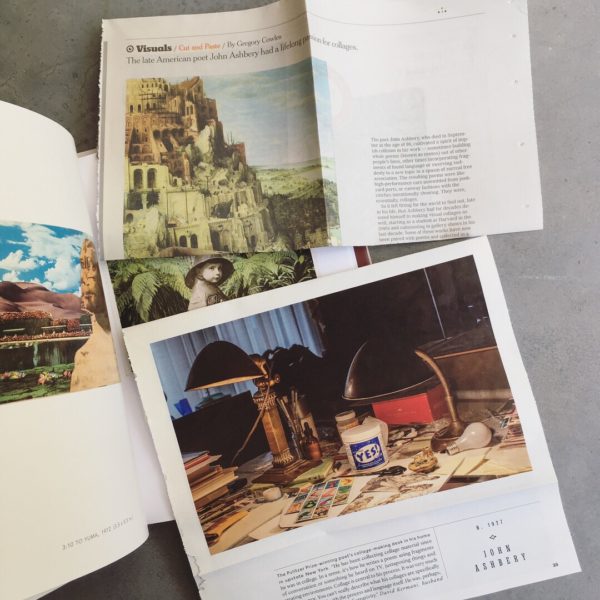
Years ago I borrowed this copy of Italo Calvino’s If On A Winter’s Night A Traveler from my father-in-law, and when I opened it up I found Calvino’s 1985 NYTimes obit and stories from a 1983 Harper’s.

I was so surprised and delighted by these unexpected artifacts that I decided to start saving clippings in my own books. Here’s my copy of John Ashbery’s They Knew What They Wanted, in which I stuffed a NYTimes review and a photo of his collage desk.

Here’s my copy of Lonesome Dove with a July 2010 Texas Monthly map of the plot of the book and my copy of Salt Fat Acid Heat with Wendy’s piece about writers’ snacks, “The Raw and the Cooked,” from 2011:

Saving clippings this way turns each book into a time capsule. The next time I open one of these books, a paper treasure will fall out. A little surprise for my future self. (Or whoever else cracks it open.)
“Time capsules are notoriously disappointing,” writes Sam Anderson in Boom Town. “They are supposed to be magic existential wormholes to a lost reality, but instead they are almost always empty, damaged, full of junk — further depressing evidence (as if we needed any) of the absolute tyranny of time.”
These time capsules, however, have never disappointed me. They always delight.